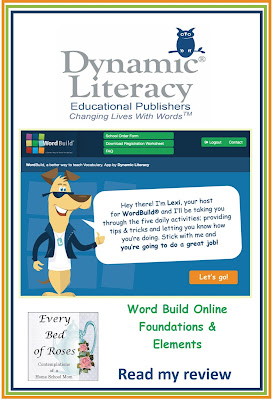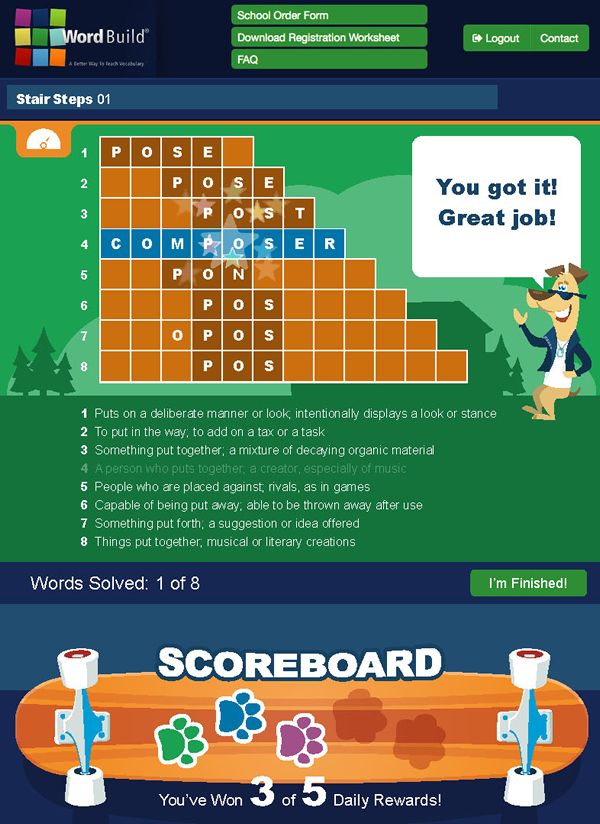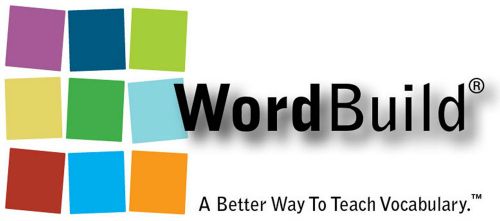What is parsing? Parsing is labeling each part of speech in a sentence, and using an abbreviation over each word to indicate which part of speech each one is.
Grammar was not my forte at school or after for that matter. I could give you the definitions of the parts of speech and examples of each one, but I could not apply my knowledge to every day sentences at all. When it came to teaching grammar to Timothy and Jane they were handed a grammar curriculum and told to work through it. I was very grateful for the Teacher Key so I could mark their work because it made no sense to me at all.
We have been using GrammarPlanet for the last month and LOVE it! I'm finally beginning to understand how to apply my grammar knowledge. I do this daily with Nathaniel and we are both enjoying the journey.
How to get started
- Click on sign up for FREE! and create the parent account. You will need to put in your first and last name. Under role select Teacher and then input your email and selected password.
- GrammarPlanet will send you an email with a link to activate your account.
- Once activated you will be taken to a page to enrol your students, which can also be found when you click on the drop down arrow next to your name in the upper right hand corner. Click on +ADD STUDENT. You will need to add in their first and last name, user name (this will be lower case), a password, under group you will need to select the group you made and you can add in an optional parental email. Click CREATE.
As the teacher you can see each students progress and average percentage score at a glance.
From the class page you select a student to see a review of their personal progress. This is the page you will need to access to either reset or unlock a unit should the student need this done.
The program is based on mastering the materials they are working on. Should the student get too many incorrect answers the unit is locked and an alert is emailed to the teacher.
I can look through the unit and see which sentences the student incorrectly labelled and help the student understand which ones were incorrect and why. The unit report button produces a pdf document with a list stating the unit practise numbers and whether the student got them correct or incorrect.
The GrammarPlanet program has been written to asses the students understanding of the work and adapt to their specific need. Should the student need more practise it will provide more practise questions. For example in Unit 1 Nathaniel was given fourteen practise questions and five Test questions whereas I was given eleven practise questions.
When a unit is locked you have the option of either unlocking the unit or resetting the progress. I have chosen to RESET PROGRESS on the units so that he can redo the unit he has not successfully navigated and gain proficiency before learning the next part of speech.
Resetting a unit is done by clicking RESET PROGRESS, upon which a pop up window appears stating Reset Student Progress with a drop down box for you to select the unit needing to be reset. Select the unit you want reset and click RESET. GrammarPlanet will then double check and ask if you are sure. If you are click on YES and the unit is reset back to the beginning.
One word of caution when doing this be sure to select the correct unit to reset as the whole program will delete everything achieved by the student from the unit you select and includes all units completed after the selected unit.
When the student logs in they will be taken to their dashboard, from here they can see their progress at a glance. They can go back to completed units or continue forward by clicking on the green CONTINUE PROGRESS BUTTON.
- On launching the program opens up the next unit being studied. In this unit we can see at a glance on the top right we are studying Pronouns.
- The orange button on the bottom left is where we access the unit notes which are provided in PDF format and are to be printed. We have been printing these and will be comb binding them upon completing the program. The notes are concise and beautifully presented. I'm looking forward to having a complete grammar reference book upon completion. You do not need to read the notes to your student as Erin (the teacher) will fully explain the grammatical part of speech within the video referencing the notes on hand.
Erin speaks clearly and slowly carefully teaching the concept at hand. If you hover over the video an outline of the class will appear on the left hand side of the screen.
After a concept has been taught, the video will auto stop and a small multiple choice quiz question will appear. If you answer the question incorrectly you have the option to replay the last section or continue. Upon completing the video teaching the student then progresses onto the unit practise questions.
From here you then commence the practise questions for the unit you are working on.
 |
| Each word in the sentence is contained in a box. |
 |
| GrammarPlanet then marks the work submitted. Students receive instant feedback on work submitted. |
 |
| Any incorrect or missed selections are highlighted in red. Correct answer is indicated above the word in a green text box. |
How long does it take?
The recommendation is for students to work on a lesson for 15 minutes a day. I found that doing a longer lesson or multiple lessons left us both feeling overwhelmed.
- Our routine now is to listen to the lesson and answer the video questions on day one.
- We then attempt the practice questions the following day.
- If we don't pass the practice questions I reset the progress and we redo the practice sentences the next day. I keep resetting the unit until we pass.
- Once we pass the practice questions Nathaniel then does the test the next day.
Scope and Sequence
GrammarPlanet currently has 13 units available. New units are being added weekly and the total number of units will be 60 upon completion. Sentence diagramming starts in unit 7. Once we reach that level I shall add a screen shot to this review for you to see.
Cost of GrammarPlanet
- You can sign up for FREE! The free version of GrammarPlanet is supported through advertising.
- Purchasing GrammarPlanet removes the advertising bars (this option is currently under development and will be available shortly).
- GrammarPlanet is aimed at students from 10 to 99 who want to improve their English. It can be used by students in school, students at home, or adults individually or as a group.
The creation of GrammarPlanet is the realisation of a years-long dream to be able to make grammar education … REAL grammar education … available and affordable for anyone, regardless of the type of school, the economic background, the location, etc. While there are a lot of homeschoolers who will benefit from it, I also hope low-income schools, students who go to schools that don’t teach it, and adults who never learned it, will be able to finally learn HOW our language works and therefore learn how to speak and write it correctly.
The core philosophy behind GP is my mother’s creation: Analytical Grammar, a book-based program that has been on the homeschool market for more than two decades. Mom passed away more than three years ago, but before her death we were talking about how cool it would be to have a website like this. It’s SO exciting to me that the dream she (and Jerry!) and I discussed back then is now real. Her way of teaching grammar is just SO GOOD. I want as many people around the world as possible to have access to it, and digital is by far the way to go to achieve that dream.
- Erin Karl CEO Grammar Planet/Owner of Analytical Grammar -
Connect on Social Media
Over All I thought ...
I love this program and am very grateful to the developers for making it available to us. As a mom who personally struggles with parts of speech and sentence diagraming it's a relief to have someone available to teach each part of speech along with reliable notes.
I like that the program gives instant feedback on each problem and test. Erin Karl is a great teacher who speaks clearly and helps the student understand the part of speech they are working on. Grammar is taught in a logical easy-to-understand manner. I have learned so much in the first four units I can confidently explain the why behind each grammatical choice I make (thank you Erin!).
I am looking forward to working my way to the end of this program and gaining a fuller understanding of grammar in the English language and would highly encourage you to enrol your students in the Grammar Planet program.
Blessings
Chareen















































